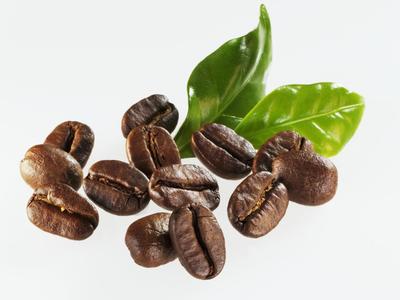Flavor description of Costa Rican Tarazu coffee beans taste grinding scale
Costa Rica Tara Beads Coffee Bean Flavor Description Taste Grind Scale
Coffee farming is a relatively advanced occupation in Costa Rica. Coffee farmers have a high status in Costa Rica. In 1897, the citizens of the capital witnessed the inauguration of the National Theatre donated by the coffee tycoon. Coffee wealth has brought stability to Costa Rica's politics, economy and democracy, something rare in Central America. In addition, Colombia has laws that allow only Arabica to be grown, and Robasta is a "contraband" in its territory, and it is also the first in the world.
Costa Rica's output is not large, with an annual output of about 110,000 tons, ranking seventh in Central and South America. Colombia is dominated by recent coffee varieties, such as kadura, kaduai, new world, etc., ancient bourbon and tibeka are rare. There are also many varieties derived from the territory, the most famous is Bourbon variety Vera Saqi, belonging to the elegant flavor of varieties, Brazil has also been introduced to plant, has won awards. In addition, Colombian research institutions have spared no effort to improve the hybrid Katimo, trying to reduce the strong bean bloodline and enhance the Arabica flavor of Katimo, which has been exported to Asia for trial cultivation in recent years.
Currently Tarazhu Cooperative has 26 member estates. One of the most prestigious coffee estates in Tara Pearl is La Minita Estate. Lamini produces about 1 million pounds of coffee beans a year, and the beans produced on the estate are carefully selected to remove defects. Only 15% of the beans can be stamped with Lamini Estate, and the rest goes to the coffee market. But the price of these coffees coming into the market is still higher than that of other coffee beans grown in Central America. Lamini Tower's strict management of all aspects of coffee production has established a world-class reputation and can be called a world-famous coffee estate.

Important Notice :
前街咖啡 FrontStreet Coffee has moved to new addredd:
FrontStreet Coffee Address: 315,Donghua East Road,GuangZhou
Tel:020 38364473
- Prev

Characteristics of Colombian Coffee Coffee description of Regional Flavor produced by Variety treatment
The characteristics of Colombian Coffee Coffee varieties deal with the flavor of the French region description of Colombia, beautiful mountains and rivers, beautiful scenery, pleasant climate, spring all year round, fresh air, refreshing. Colombia has a mild climate, air *, and a diverse climate that makes it a harvest season all year round, with different kinds of coffee ripening at different times. What they grow is of unique quality.
- Next

Flavor description of Ethiopian Cochel coffee beans taste grinding scale production area
The flavor of Ethiopian Cochelle coffee beans describes the taste grinding scale producing area Cochelle is in the Yejia Sheffield region of southern Ethiopia, but it is said to be one of the highest places on earth to grow coffee. Due to the high altitude, wild native species of coffee, and iron-rich soil, the Cochel community is a very good quality coffee in Yejia Sheffield. Have active citrus acid
Related
- Detailed explanation of Jadeite planting Land in Panamanian Jadeite Manor introduction to the grading system of Jadeite competitive bidding, Red bid, Green bid and Rose Summer
- Story of Coffee planting in Brenka region of Costa Rica Stonehenge Manor anaerobic heavy honey treatment of flavor mouth
- What's on the barrel of Blue Mountain Coffee beans?
- Can American coffee also pull flowers? How to use hot American style to pull out a good-looking pattern?
- Can you make a cold extract with coffee beans? What is the right proportion for cold-extracted coffee formula?
- Indonesian PWN Gold Mandrine Coffee Origin Features Flavor How to Chong? Mandolin coffee is American.
- A brief introduction to the flavor characteristics of Brazilian yellow bourbon coffee beans
- What is the effect of different water quality on the flavor of cold-extracted coffee? What kind of water is best for brewing coffee?
- Why do you think of Rose Summer whenever you mention Panamanian coffee?
- Introduction to the characteristics of authentic blue mountain coffee bean producing areas? What is the CIB Coffee Authority in Jamaica?

